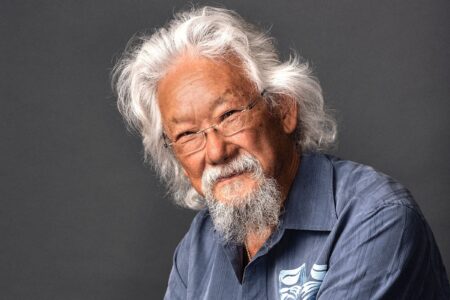AN OUNCE: Cancer is NOT Inevitable: Creating a Healthy Environment
A recent poll by the Canadian Partnership Against Cancer shows that almost half of Canadians – 43 per cent – believe that developing cancer is just a matter of chance. While about 80 per cent of the survey’s respondents linked a healthy diet and exercise with heart disease and diabetes, 72 per cent were not aware of the link between cancer and lack of exercise and more than two-thirds – 69 per cent – did not appear to know about the link between cancer and being overweight.
The World Cancer Research Fund and the American Institute for Cancer Research recently announced that one-quarter to one-third of all cancers worldwide can be prevented through a healthy diet, regular physical activity and a healthy body weight. Smoking is still the main cause of a variety of cancers, accounting for 30 per cent of cancer cases and deaths. About another 10 per cent of cancers are linked to genetics, although the environment likely has a role to play in triggering individual cases. That still leaves at least 30 per cent of cancers of supposed “unknown origin”.
Does that mean we really have no idea where these remaining cancers come from? Is cancer indeed inevitable and based mainly on chance? Of course not! And while ‘lifestyle’ factors are important, we can go well beyond that with knowledge we have today. We know that between fifty and eighty per cent of cancers are preventable. Of course, don’t smoke, exercise and eat healthy food, but let’s also get rid of environmental contaminants. There are literally hundreds of ways to do it. Prevent Cancer Now hopes to reduce that load through our work with governments and regulators. In the meantime, there are lots of steps you can take. That’s the message Prevent Cancer Now is hoping to get out there.
Take Care of Your Children
Babies are exposed to a wide range of chemicals from household products and even from breast milk. Children are more vulnerable because, pound for pound, they eat, drink, and breathe more than adults. They also live closer to the ground where toxins accumulate in higher concentrations. Finally, babies’ kidneys and livers are not fully developed, so they cannot excrete toxins as well as adults can.
While breast milk does contain persistent toxic substances, it is still the healthiest option for babies. Along with its convenience, accessibility, and low cost, it is brimming with immune boosters and anti-infective agents. There is some evidence that breast-feeding may reverse the damage of chemical exposure in the womb. Eliminating toxins from the immediate environment will help reduce toxins in breast milk.
In a benchmark study of umbilical cord blood, 10 newborns were found to have an average of 230 industrial chemicals in their blood at birth, 180 of which are known to cause cancer in humans or animals. The developing fetus is susceptible to DNA damage from vehicle pollution and second-hand smoke. Even before conception, there are risks: The children of men who worked with benzene or alcohols prior to conception are nearly six times more likely to develop leukemia.
These statements may strike fear in the hearts of parents, but there are many ways to reduce cancer hazards in your environment:
• Pregnant women should avoid taking on home improvement projects, especially ones using toxic materials, such as particleboard or plywood. These materials are usually made with harmful substances, such as formaldehyde, toxic adhesives, sealants, and caulks. Choose baby-friendly paints – ones that are VOC-free – rather than solvent-based or even some latex paints that release volatile organic compounds such as benzene.
• Restrict or eliminate consumption of freshwater fish during pregnancy, when advised by local authorities. Trim excess fat from meat products, where lipid-loving toxins tend to accumulate.
• Avoid plastics, including baby bottles, toys, and the lined cans of baby formula and other foods. Many plastics contain bisphenol A and phthalates. Bisphenol A mimics estrogen and has been linked to cancers that are triggered by hormones, including prostate and breast cancer. Phthalates are used to soften plastics, including teething rings and other baby toys, and are also hormone disrupters.
• Seek out products that are not treated with fire retardants (PBDEs). Unfortunately, fire retardants are used in all new children’s clothing, bedding, and household furnishings. They adversely affect brain development and thyroid function, and have been linked to childhood cancers. PBDEs have been banned in products throughout the European Union. New parents should buy certified organic cotton and wool mattresses, and formaldehyde-free crib blankets and sheets ― not the perma press kind.
• Avoid chlorine, often used by diaper services. If you use a diaper service, ask whether they can use organic, all-cotton products and chlorine-free laundering.
• Be very cautious about subjecting babies and children to diagnostic X-rays, especially CT scans. All X-rays, CT scans, and other forms of nuclear medicine should be tracked and lifetime records compiled. (The US Food and Drug Administration provides a useful x-ray card.
Some good online resources are:
• The Health Before Pregnancy Environment Checklist, produced by Best Start: Ontario’s Maternal Newborn and Early Child Development Resource Centre.
• The Canadian Partnership for Children’s Health and Environment also provides lots of good, practical information for parents.
Look After Yourself
One of the most promising ways to protect yourself against cancer is to eat organic produce whenever possible. In addition to eliminating pesticides from your diet, organic foods have been linked to preventing cancer. While researching the role of resveratrol — the antioxidant phytoestrogen found in red wine — as an anti-cancer agent, British researchers identified similar substances they named salvestrols, found exclusively in organic foods. Salvestrols appear to act as natural triggers that induce cell death within cancer cells. Organically grown cabbage, broccoli, peppers, red fruits and berries, apples, pears, and various herbs are rich in salvestrols.
To reduce your exposure to cancer-causing agents:
• Reduce indoor air pollutants by keeping your home well-ventilated and using simple, home-made cleaners made from white vinegar, lemon juice, baking soda, salt, Borax, and olive oil. See Recipes for Safe Cleaners.
• Remove new carpeting and replace it with healthy flooring, such as wood, natural linoleum, cork or area rugs that can be washed in soap and water (not dry-cleaned).
• Seek out personal care products and cosmetics that are less toxic. Women use an average of 20 of these products a day; men use about 10. In a recent study, over 30 per cent of personal care products studied contained one or more ingredients classified as a possible human carcinogen, including parabens and phthalates.
Almost 1 per cent of products contained known or probable carcinogens. Better brands include Aubrey ® Organics, Aveda, Burt’s Bees® and Dr. Hauschka.
• Don’t use pesticides, indoors or out, especially during pregnancy. Effective organic options do exist.
• Avoid dry-cleaning solvents, spot removers and carpet cleaners. If the bottle or can has a skull and crossbones on it, don’t use it!
• Avoid traffic exhaust whenever possible. When driving in heavy traffic, re-circulate internal air, rather than drawing in polluted air from the outside.
Cancer prevention begins at home. I hope you find these tips helpful.
NOTE: This first article in the series looks at children and the home environment. The list of things you can do to keep your family safe can appear daunting, so just pick one or two that you can do right away and print off this column to refer to later, when you’re ready to add another to your “to do” list. Check the Prevent Cancer Now website for more information. Every little bit helps!
(This article contains information from Cancer — 101 Solutions to a Preventable Epidemic by Liz Armstrong, Guy Dauncey, and Anne Wordsworth)

























